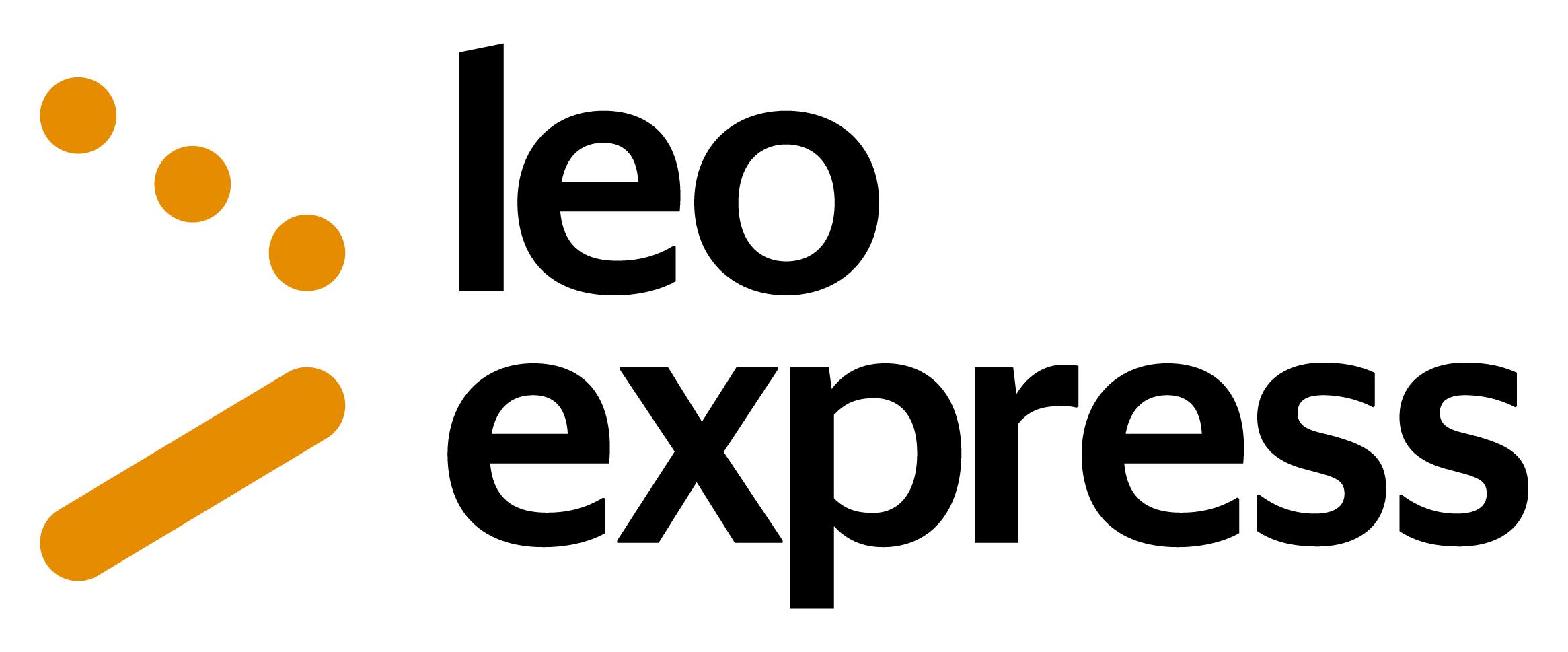
You can buy train tickets directly from the operator or through a reseller. The reseller is typically slightly more expensive (3-5%) but can provide an easier booking experience, especially if you travel with more than one operator.


These operators provide a complete journey either as a direct connection or through their partners. Even if a change of trains is involved, it’s all part of a single itinerary managed by the same train company or its partners, offering a smoother and more coordinated travel experience.


Some operators don’t run direct trains the whole way, but they serve either the departure or arrival station. In many cases, you can combine two of these operators to complete your journey by changing trains along the way. This is often a flexible and budget-friendly way to travel — especially if you’re comfortable piecing together your own itinerary.
Just keep in mind that these are separate journeys, which means a delay on the first leg could cause you to miss the second without automatic compensation or rebooking. It’s a great option for confident travelers who don’t mind a bit of extra planning.


Deutsche Bahn, commonly referred to as DB, is Germany’s national railway company and one of the most prominent players in European rail travel. They operate a wide range of train types, including high-speed Intercity-Express (ICE) trains, Intercity (IC) trains, and regional trains. ICE trains are known for their speed and comfort, offering amenities such as Wi-Fi, power outlets at seats, dining car services, and comfortable seating arrangements in both first and second class. Passengers in first class enjoy additional benefits like more spacious seating and access to DB Lounges at major stations. Deutsche Bahn is renowned for its customer support, providing assistance through various channels including online, phone, and at-ticket counters in stations, with staff typically offering service in multiple languages.
FlixBus is primarily known as a long-distance bus operator, but they also offer rail services under the brand FlixTrain. The trains generally cover popular routes within Germany and occasionally extend to international destinations as part of their network expansion. FlixTrains are designed to provide a budget-friendly travel option and tend to have fewer amenities than high-speed trains. However, they often include Wi-Fi and have a selection of snacks and beverages available for purchase. Customer support from FlixBus, covering FlixTrain services, encompasses a user-friendly app and website, alongside telephone support in several languages, making it accessible for travelers to book tickets and manage their journeys easily. First-time travelers would find the convenience of app-based bookings and boarding passes especially user-friendly with this operator.
The Interrail Global Pass is valid for travel from Budapest to Stockholm for European residents, as it allows travel across multiple countries in Europe, including Hungary and Sweden. The Interrail One Country Pass is not valid for this journey as it covers only travel within one specific country. The Eurail Pass is valid for non-European residents traveling from Budapest to Stockholm, as it also allows international travel in multiple countries within Europe.
Upon arrival in Stockholm by train, you will likely find yourself at Stockholm Central Station, which is the main hub for various modes of public transportation. The metro, known locally as the Tunnelbana, is the most efficient way to navigate the city. It consists of three main lines: red, green, and blue, covering nearly all neighborhoods. Stations are denoted with a ‘T’ sign and trains run from approximately 5 AM to 1 AM on weekdays, with extended hours on weekends.
Trams are another convenient option, particularly for accessing areas like Djurgården and other parts of central Stockholm. The two main tram lines to note are line 7, which runs from Kungsträdgården to Waldemarsudde, and line 19.
Buses supplement the metro and tram network by providing service routes throughout the city, including late-night hours when the metro is not operational. Stops are plentiful and well-marked, with digital signboards displaying waiting times.
Taxis are widely available and can be easily hailed on the street or pre-booked. It is important to ensure that the taxi is licensed. Licensed taxis have yellow number plates and a white decal with the company’s name and information, as well as a price sticker indicating rates, usually displayed in the windows.
Ridesharing services such as Uber operate in Stockholm, providing another convenient and flexible travel option. These require a smartphone app to book rides and usually have competitive pricing compared to taxis.
Tickets for public transportation are unified, allowing seamless transfers between trams, buses, and the metro. Tickets can be purchased at SL Centers, ticket machines at the stations, or through the SL app. Note that cash is not accepted on public transport, so be sure to purchase and validate tickets in advance. A reloadable SL Access card is recommended for extended stays, offering convenience and discounted travel fares.
Stockholm, as the capital of Sweden, serves as a major hub for rail connections both domestically and internationally. Domestically, one of the most popular routes is the connection to Gothenburg, Sweden’s second-largest city, which takes approximately three hours on the SJ high-speed train. Another key route is the Stockholm to Malmö line, connecting to the southern part of Sweden and taking about four and a half hours. For travelers seeking the north’s beauty, the train from Stockholm to Umeå offers a scenic journey through Sweden’s expansive landscapes, usually taking around six hours.
Internationally, Stockholm’s rail connections extend to several major cities. The direct train service to Copenhagen, Denmark, is highly popular, crossing the Öresund Bridge and taking about five and a half hours. From Copenhagen, travelers can continue southwards into Germany, with Hamburg being a common onward destination, often requiring a transfer in Copenhagen. The overnight train service to Berlin, Germany, operated by Snälltåget, provides a convenient and comfortable option for travelers looking to venture further into Europe. While direct train services to Norway’s capital, Oslo, are not available, a combination of train and comfortable transfer options through cities like Gothenburg facilitate this journey effectively.
These routes emphasize Stockholm’s strategic position in the Scandinavian rail network and its efficient connectivity to broader Europe, making it an ideal starting point or hub for train travelers.
The best time to visit Stockholm is generally from late spring to early autumn, specifically May through September. During these months, the weather is milder and more pleasant, with longer daylight hours that include the enchanting phenomenon of the midnight sun. This period also allows for an enjoyable exploration of the city’s outdoor attractions, parks, and the archipelago.
May and September are particularly favorable for those looking to avoid high tourist crowds and elevated prices while still experiencing pleasant weather. Prices tend to peak during the summer months of June to August when tourism is at its peak due to holiday travelers. Despite the higher costs, this is when Stockholm hosts numerous festivals and events such as Midsummer celebrations in June, providing rich cultural experiences.
For travelers arriving by train, bear in mind that the peak tourism period in summer might lead to fuller trains and potentially higher ticket prices unless booked in advance. Thus, opting for late spring or early fall could provide a balanced experience with agreeable weather, fewer tourists, and more manageable travel costs, while still offering access to an array of activities and cultural festivities.
When traveling from Budapest to Stockholm by train, it’s important to pack wisely for both the journey and your time in Sweden. Start with essential travel documents, including your valid passport and any necessary visas or residence permits, as you’ll be traveling through multiple countries. Do not forget your train tickets or any e-tickets and reservation confirmations. A European Health Insurance Card (EHIC) or travel insurance policy is recommended for medical coverage. As you might need power for electronic devices, pack a type C or F power adapter compatible with Hungary and Sweden’s plugs, and consider a universal adapter if you have multiple stops in other countries. Bring a power bank to keep devices charged during the ride. Since the journey can be long, comfortable clothing and layers are essential to adjust to varying temperatures on the train and in Sweden. Include a travel pillow, an eye mask, and earplugs or noise-canceling headphones for restful sleep on the train. Snacks and a reusable water bottle will keep you refreshed, particularly as you may experience delays. Ensure you pack toiletries following travel regulations, along with hand sanitizer, tissues, and any personal medications. A small first-aid kit can be handy. For entertainment, bring books, an e-reader, or download movies and music on your device. Access to maps and travel guides, either in print or digital, will enhance your visit. A Swedish phrasebook or translation app could be useful for interacting locally. Lastly, considering the variable weather, pack a lightweight waterproof jacket or umbrella for activities once you arrive in Stockholm.